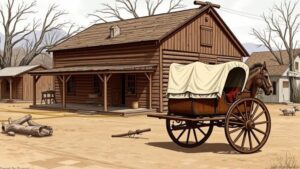Using Ancestry.com to Uncover Family Histories That Lead to Hidden Relics
Using Ancestry.com to Uncover Family Histories That Lead to Hidden Relics
The advent of digital genealogy has revolutionized how individuals explore their family histories. Among the many services available, Ancestry.com stands out as a comprehensive tool for tracing lineage and unearthing ancestral stories, some of which are intertwined with hidden relics and artifacts. This article examines the methodologies and outcomes of using Ancestry.com to uncover family histories that may lead to the discovery of previously unknown relics.
The Role of Ancestry.com in Genealogical Research
Ancestry.com, launched in 1997, has grown into a leading platform for genealogical research, boasting access to over 30 billion historical records from various sources, including census data, birth and death certificates, and military records. platform enables users to create family trees, facilitating connections between individuals based on shared ancestry. In 2023, Ancestry.com reported over 25 million DNA tests conducted, with many users seeking tangible aspects of their family histories, including stories and objects from the past.
Methodologies for Uncovering Hidden Relics
The process of utilizing Ancestry.com to discover hidden relics often involves several methodological steps:
- Create a Comprehensive Family Tree: Users should begin by inputting their known family information to build a detailed family tree. This tree serves as the foundational framework for further research.
- Explore Historical Records: Investigating specific historical documents can reveal details about your ancestors lives that may lead to the location of artifacts. Key records to explore include military service records, land grants, and probate records that detail inheritance.
- Engage with Community Forums: Ancestry.com hosts user forums where individuals can share discoveries and seek assistance. These discussions can lead to valuable information concerning family relics passed down in various branches of extended families.
Case Studies of Family Histories Uncovered
Real-world applications of this research methodology can illuminate the process of finding hidden relics.
Case Study 1: The Civil War Artifact
A user on Ancestry.com named Sarah discovered that her great-great-grandfather, William Smith, served in the Union Army during the Civil War. By exploring pension records and enlistment documents, she located a letter written by him to his family, which referenced a unique brass button he had taken from a Union uniform. Sarahs subsequent search of historical battlefields led her to the exact location where her ancestor fought, resulting in the discovery of the button itself, as well as other associated items from the period.
Case Study 2: The Lost Heirloom
Another user, Michael, traced his ancestry back to a prominent family in Colonial America. By leveraging records from Ancestry.com, he learned about a lost family heirloom, a silver tea service that had been given as a wedding gift. Michael procured additional documentation regarding property transfers and family wills, leading him to the current owner of the tea service, who was unaware of its historical significance. This connection restored a part of Michaels family heritage that had been lost for over a century.
Potential Challenges and Considerations
While Ancestry.com offers significant resources, users may encounter various challenges, including:
- Incomplete Records: Many historical documents are either missing or incomplete, which can hinder thorough research.
- Data Accuracy: User-submitted family trees may contain inaccurate information, necessitating careful verification against credible evidence.
- Privacy Issues: Some families may wish to keep certain aspects of their lineage private, which can complicate research initiatives.
Conclusion
To wrap up, Ancestry.com serves as a robust platform for uncovering family histories that can lead to the discovery of hidden relics. By systematically creating family trees, exploring historical records, and engaging within the genealogy community, users can potentially recover significant artifacts with profound personal and historical value. As evidenced by the case studies, the process not only enhances personal heritage but also contributes to the broader understanding of historical narratives.
Actionable Takeaways
- Set up an account on Ancestry.com and begin building your family tree.
- Investigate historical military, land, and estate records through the site to discover artifacts linked to your ancestors.
- Participate in community forums to gather insights and learning from shared experiences.
Through these steps, individuals can embark on a rewarding genealogical journey, uncovering links between personal histories and forgotten treasures.


